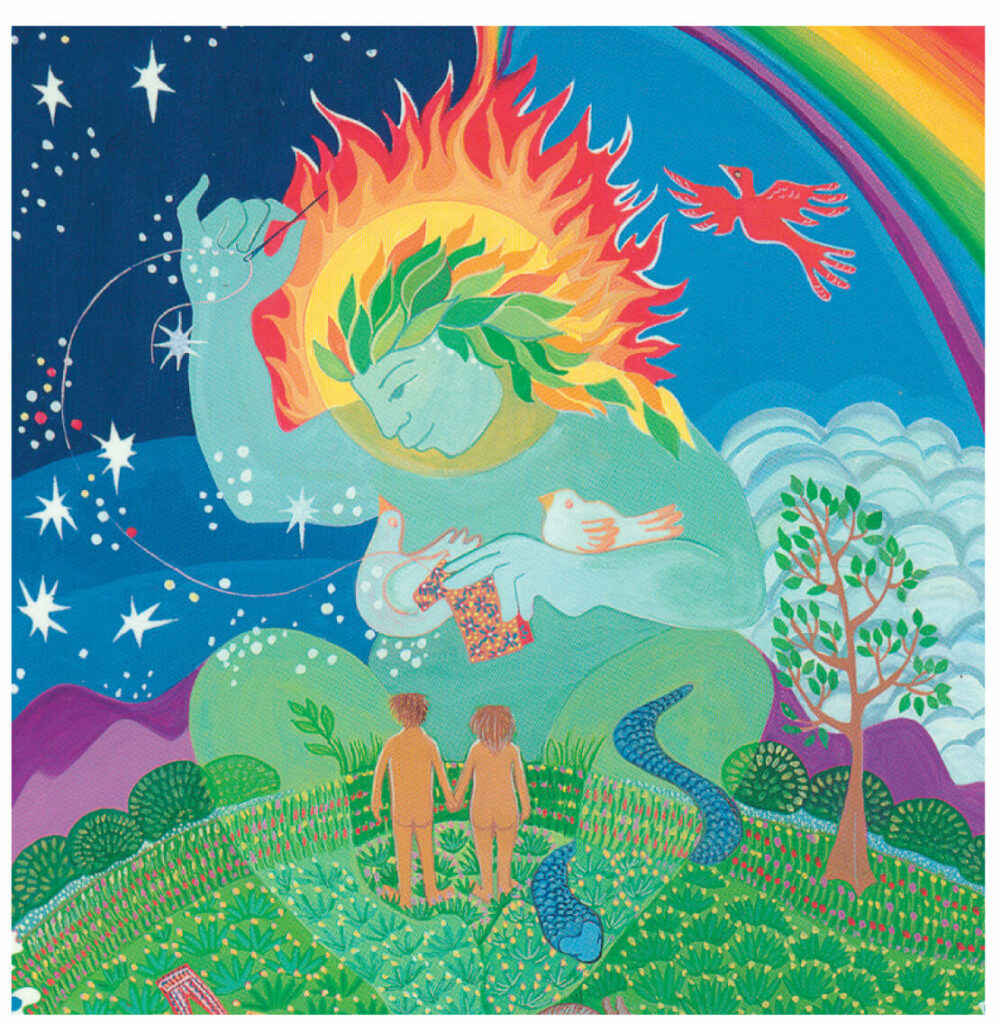
Sunday’s first reading tells the creation and temptation stories in Genesis 2-3. In this creation story God forms a human from the humus; in Hebrew God forms an adam from the adamah. Today most of us hear adam as a proper male name, but the word play links human and humus, literally an earthling to earth. How does substituting human for adam affect how you hear Genesis 2.7-9 below?
God gives life.
Creator God formed a human out of the humus of the ground and blew into the human the breath of life, and so the human became a living being. Then Creator God planted a garden in Eden, in the east, and put the newly-formed human there. Out of the ground Creator God made various trees grow that are delightful to look at and good for food, with the tree of life in the middle of the garden and the tree of the knowledge of good and evil.
Genesis 2.7-9
Sunday’s reading then skips God making the animals, the human naming them, and God building a partner for the human out of a rib bone. The reading focuses instead on the woman’s decision to eat from the tree of the knowledge of good and evil.
NARRATOR: Now the serpent was the most cunning of all the animals that Creator God had made. The serpent asked the woman—
SERPENT: Did God really tell you not to eat from any of the trees in the garden?
WOMAN: We may eat of the fruit of the trees in the garden; it is only about the fruit of the tree in the middle of the garden that God said, “You shall not eat it, or even touch it, lest you die.”
SERPENT: You will not die! God knows that when you eat of it your eyes will be opened and you will be like God, knowing what is good and what is evil.
NARRATOR: The woman saw that the tree was good for food, delightful to the eyes, and desirable for gaining wisdom. So she took some of its fruit and ate it; and she also gave some to the man, who was with her, and he ate it. Then the eyes of both of them were opened, and they realized that they were naked; so they sewed fig leaves together and made loincloths for themselves.
Genesis 3.1-7
Archaeologists have found images of the goddess Asherah, the consort of the Canaanite god Baal, holding a lily in one hand and one or two serpents in the other. For ancient Canaanites, the snake represents immortality and knowledge.
The serpent of Genesis says that eating the fruit of the tree in the middle of the garden will give the woman the divine qualities of knowledge and immortality. The woman uses her senses to observe that the fruit looks appealing and good to eat. The woman faces basic questions, “Who am I?” Am I like God? Am I like the animals?” The story gives her the intelligence to ask the questions and the freedom to choose.
The story sets before the woman much the same choice God sets before Israel in the book of Deuteronomy— “life and prosperity, death and doom. If you obey the commandments, statues, and decrees, you will live and grow numerous, and the Holy One, your God, will bless you in the land you will occupy” (30.15-16). Like the woman and like us, the people of Israel use their freedom to make choices and struggle to learn God’s ways through acquiring wisdom, the knowledge of what is good and what is evil.
As Genesis 3 tells the story of human freedom and sin, most of us hear in this story the loss of paradise. It is also the discovery of the human desire for the divine and infinite, the story of the human person as graced with an openness to transcendence. In the seven days of creation Genesis 1 tells us all God makes is good. The woman’s choice in Genesis 3 tells us we are free. Through experience, we acquire knowledge of what is good and what is evil.
- In what sense is the woman’s exercise in freedom a step up rather than a fall down?
- How true to the way human beings are do you consider this story?
- How does the artist see the relationship between God and humans?
